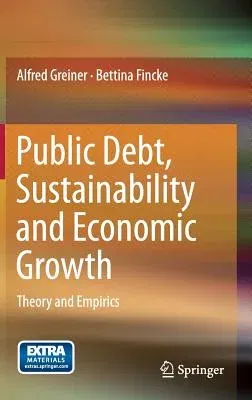Alfred Greiner
(Author)Public Debt, Sustainability and Economic Growth: Theory and Empirics (2015)Hardcover - 2015, 30 October 2014

Qty
1
Turbo
Ships in 2 - 3 days
In Stock
Free Delivery
Cash on Delivery
15 Days
Free Returns
Secure Checkout

Print Length
271 pages
Language
English
Publisher
Springer
Date Published
30 Oct 2014
ISBN-10
3319093479
ISBN-13
9783319093475
Description
Product Details
Authors:
Book Edition:
2015
Book Format:
Hardcover
Country of Origin:
NL
Date Published:
30 October 2014
Dimensions:
23.39 x
15.6 x
1.75 cm
Genre:
Economic
ISBN-10:
3319093479
ISBN-13:
9783319093475
Language:
English
Location:
Cham
Pages:
271
Publisher:
Weight:
585.13 gm